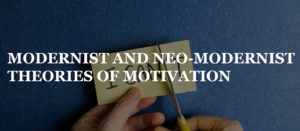The increasingly changing scenario of globalization requires more interaction among people from diverse cultures, beliefs, personalities and backgrounds than ever before. The severe competition coming from nearly every continent is making the workplace one of the parts of a world economy; people are no longer live and work an insular marketplace. For this reason, organizations (profit and non-profit seeking) have to adopt diversity to become more creative and open to change. One of the hot issues for today’s management is how to maximize and capitalize on workplace diversity. An organization’s culture tends to determine the extent to which it is culturally diverse. Cultural diversity includes the range of ways in which people experience a unique group identity, which includes gender, sexual orientation, race, ethnic and age (Ford, Cameron, (1996).
A landmark study has predicted that employment landscape has been changed forever due the rapid technological change, globalization, the demand for skills and education, an aging workforce and greater ethnic diversification in the labor market.
The workplace diversity brings about many benefits as well as challenges to an organization. Hence, the management is responsible for organizations to use diversity as an influential resource in order to enhance organizational effectiveness.
Read more:
- ORGANIZATIONAL LEARNING-CRITICAL REVIEW
- LEADERSHIP AND PERSONALITY REVIEW
- Free Business Books Summaries
Three organization types have been identified, which focus on the development of cultural diversity. They are the monolithic organization, the plural organization, and the multicultural organization. In the monolithic organization, the amount of structural integration (the multicultural groups in a single organization) is very minimal. For instance, in the United States, this organization usually represents white male majorities in the overall employee population with few women and minority men in management jobs. In the plural organization, The percentage of heterogeneous membership is greater than that in the monolithic organization and it tries to have more people from culturally diverse backgrounds that differ from the dominant group. The multicultural organization not only contains many different cultural groups, but it values this diversity.
Workplace diversity has been positively associated with many different organizational consequences, including creativity (Blum T., (2000) productivity and problem-solving (Watson et al., 1993.M moreover, firms can also gain competitive advantage through the diverse workplace.
Organizational culture & creativity:
Creativity is often referred to as useful novelty that can be applied to add value to an organization’s products and services and it does not mean novelty for its own sake (Oldham and Cummings, 1996). Creativity brings new ideas, alternatives and possibilities to be explored by an organization (Smith 1998). In the past decade the creativity research in psychology focused upon individual differences in personality, cognitive abilities, and problem-solving styles in the However, recent diverse employees may bring different perspectives to an organization and the tasks they complete. In particular, dissimilarities between individuals contribute to increased levels of creativity found in culturally diverse organizations.
In a survey of human resource professionals, respondents ranked enhanced creativity as one of the top five most important effects of workforce diversity (This finding suggests that heterogeneous groups have an advantage over homogeneous groups regarding creative tasks.
Organizational culture and Innovation:
As the phenomenon of globalization is spreading rapidly, the boundaries of organizations are also getting blurred and their cultures are encapsulating diversified portfolio of people from around the world to cultivate an atmosphere of creativity and innovation in order to win the competitive world of red-ocean.
Innovation is not as sometimes regarded to bring something new, rather a process of renewing the exiting things-products, processes, services, etc. nowadays organizations whether small or large try to build such cultures where personnel become innovators. These diverse organizational cultures then become commonplace for entrepreneurship for building and refining the existing ideas, products, process, services etc to build core competencies that are essential to winning competitive advantage.
The researchers have suggested that a culture which provides workgroup encouragement and allows some freedom and autonomy can cultivate innovations and entrepreneurship in an organization. It must be noted that workgroup encouragement brings diversity and constructive challenges among the team members (Amabile et al.,1996). As the dissimilar ideas are extensively exchanged among the members of the group, the creative and innovative performance of organizations increases.





